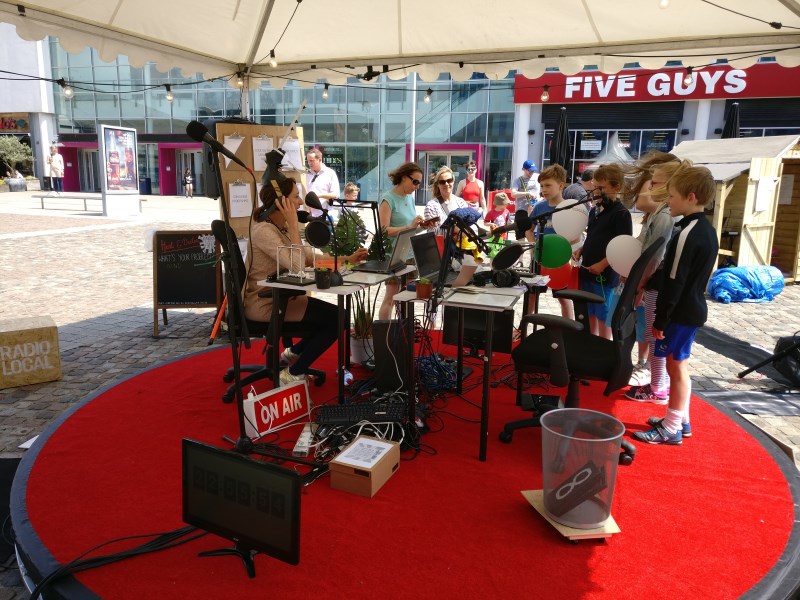

Over the weekend of 27-28th May, live art collaboration Hunt & Darton were commissioned to perform "Radio Local" at the Cambridge Junction as part of the Watch Out festival. Cambridge 105 Radio, as well as broadcasting the output, provided much of the equipment and engineering behind the project.

This presented some new challenges compared to many of our outside broadcasts:
As well as these, the broadcast was to run for a solid 24 hours!

At its core, audio mixing was handled by a Behringer X32 Rack in the van. This gives a compact mixer with an incredible amount of routing flexibility. We didn't need anything like the number of inputs available, but the ability to quickly route arbitrary combinations of channels to arbitrary outputs in software is excellent for this sort of event. Clean feed for the phone line? No problem. Need to reduce output to the PA speakers, but not the broadcast feed? Fine.
Another advantage of the X32 is the ability to control it over a network. In the van, we ran X32-Edit, and Hannah the producer used an Android tablet with Mixing Station XM32. This let her drive the show, but gave us the ability to jump in if we needed (very rarely - she was great!)
On stage, a Behringer S16 digital snake provided audio connectivity back to the X32 over a single Cat5E cable. Along with Ethernet and mains, that meant only three cables between the stage and the van - handy in a public space where trip hazards need to be avoided.
Audio playout used the open-source Rivendell suite, running on a laptop in the van. That meant that a complete loss of the stage feed would still retain playout capability. A VNC server on that laptop allowed three other laptops, one for each of the presenters and producer, to control it remotely. The presenters could see what was lined up next, and how long was left to run on a track, as well as firing jingles and sound effects from the cart wall.
The "jingle shed" used another laptop running Audacity, coupled with a small mixer and USB audio interface. After recording, jingles were saved into a Rivendell dropbox folder over the network, and ingested automatically.
Telephone calls were provisioned using a voice over IP line from Andrews & Arnold, and terminated on an instance of Asterisk running on a Linux server (which also handled various network routing functions). This sent incoming calls to an analogue telephone adaptor where they rang a traditional phone handset. When ready to go to air, a blind transfer to another extension moved the call to an instance of MicroSIP on the van PC. This was configured to auto-answer. Send audio was a post-fade mix bus containing all channels except the phone, and receive audio appeared as a channel on the mixer.
The broadcast output fed a Raspberry Pi with Cirrus Logic audio card running LiquidSOAP, streaming it back to the main Cambridge 105 studio over the internet.
Finally, our internet connectivity came from the Junction to the van via a pair of Ubiquiti Nanostation M5 5.8GHz WiFi links; a Ubiquiti UniFi UAP-AC Lite provided local WiFi access for variouis mobile devices, but all laptops, mixers, and so on were hard wired.
In summary, we used two mixers, seven laptops, four ethernet switches, two Raspberry Pis, one server, one tablet, and countless cables - but it all worked!
comments powered by Disqus